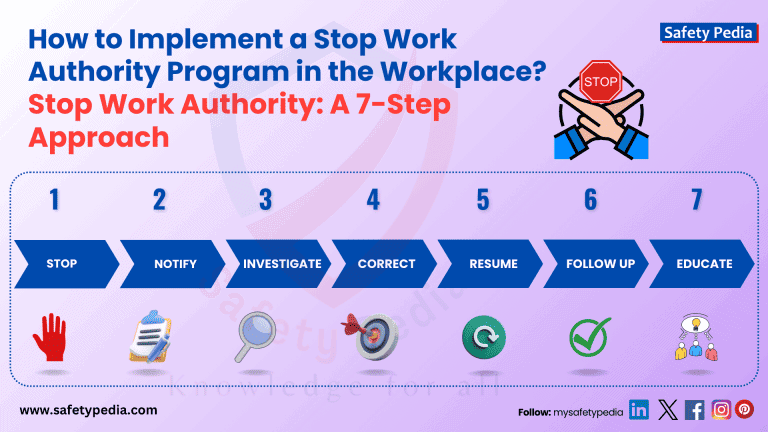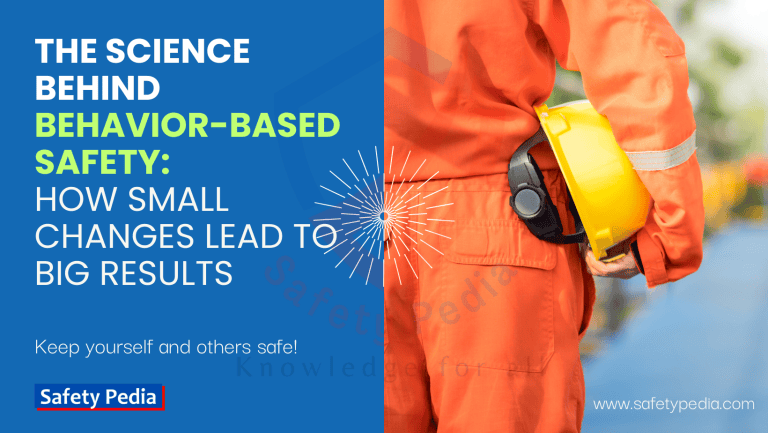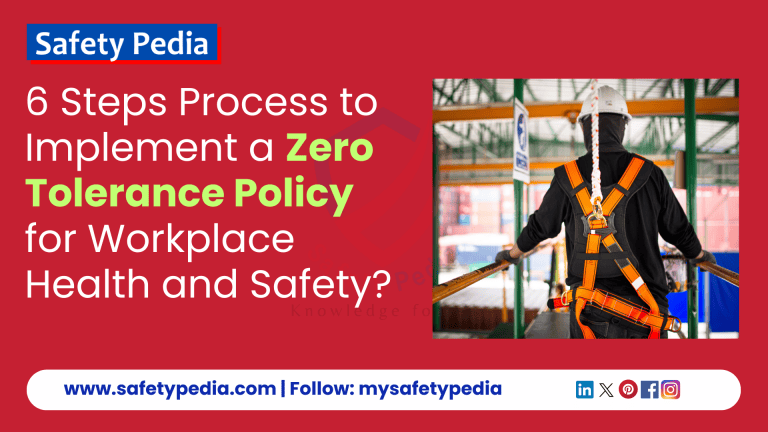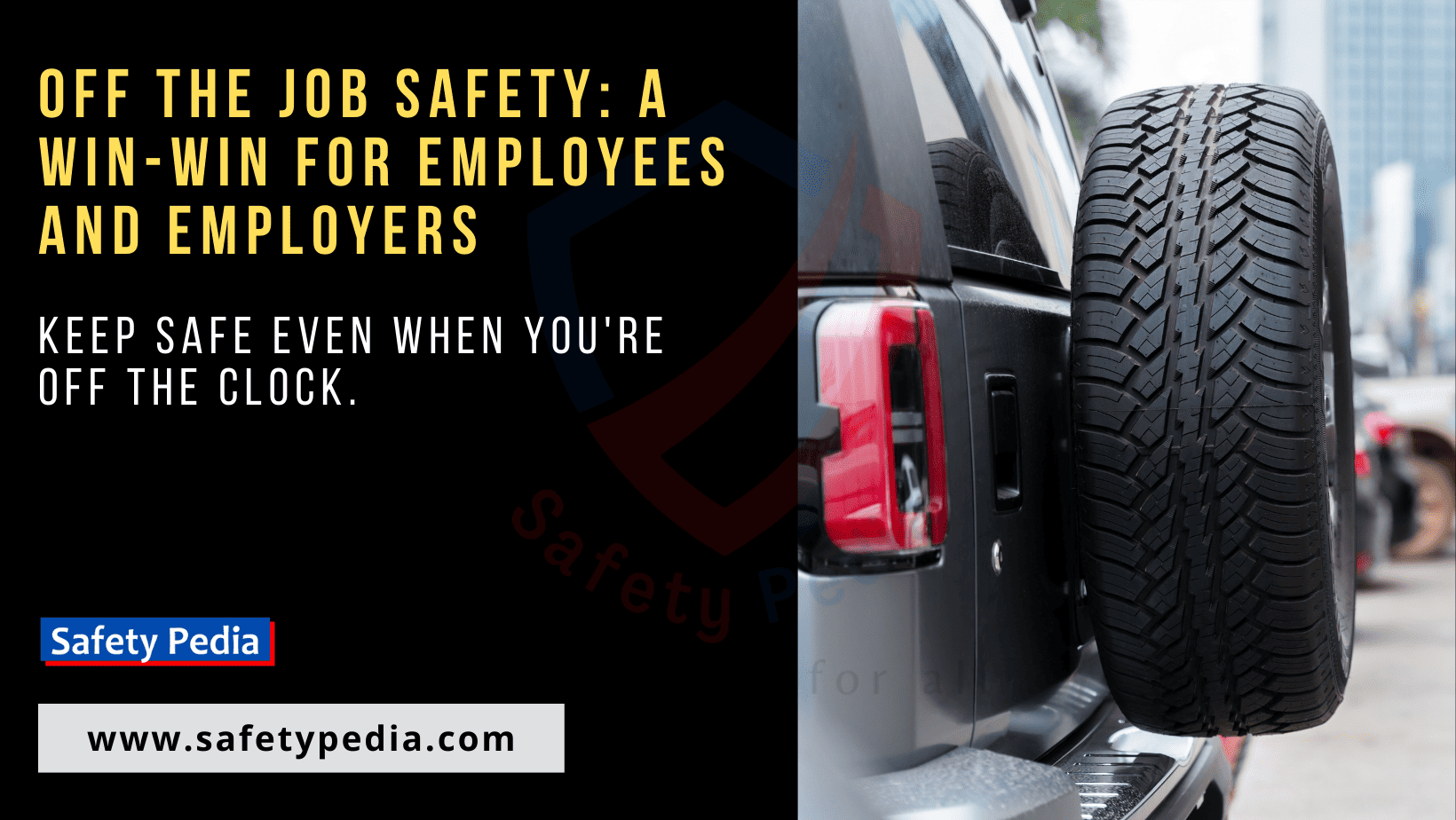
Introduction
Safety is not only a priority at work but also in our personal lives. Off the job safety refers to the prevention of injuries and illnesses that occur outside of the workplace, such as at home, on the road, or during recreational activities. Off the job safety is important for both employees and employers, as it can reduce the human and economic costs of accidents, improve employee well-being and productivity, and enhance the reputation and social responsibility of the organization.
In this article, we will discuss the benefits of off the job safety, the common causes and types of off the job injuries, and some strategies and best practices to promote a safety culture among employees.
What is Off The Job safety?
Off-the-job safety means keeping employees safe outside of work. This prevents accidents or injuries that could happen in their own time. Companies can protect their workforce, reduce absenteeism and boost productivity. This involves training them on personal safety, encouraging a healthy lifestyle, and suggesting safety guidelines to follow at home, on road and during leisure activities. It’s beneficial for both employees and employers.
Companies should focus on both on-the-job and off-the-job safety. People spend much time away from the office so employers can play a major role in wellness. Off-the-job safety initiatives include providing materials, workshops, and training sessions on common risks. This might cover safe driving, home security, mental health, physical fitness, and lifestyle. This shows a commitment to the staff’s holistic welfare.
Employers can also partner with local community groups or experts to provide specialized training and resources. This covers fire safety, financial wellness, and mindfulness techniques. This enhances the value of the workforce and strengthens the culture of off-the-job safety. Don’t forget – if you don’t take care of yourself, your family may need to practice self-defense on accident. So, stay safe!
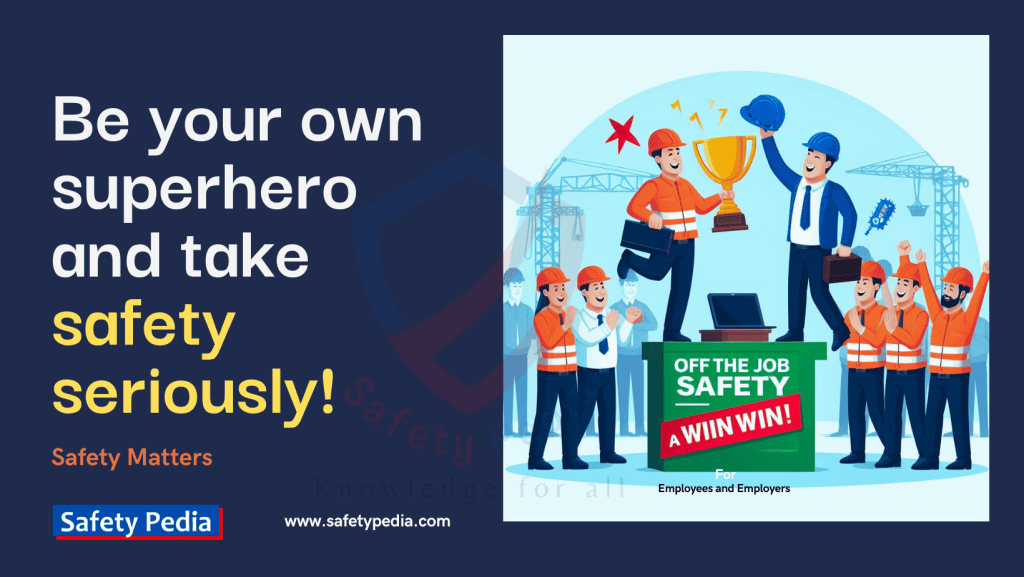
Be your own superhero and take safety seriously!
Why is Off The Job safety important?
Safety outside of work is seriously important for both employers and employees. Keeping people protected when they’re not at work reduces the chances of accidents and injuries. This results in fewer days off, better productivity, and lower healthcare costs for the employer. It also shows how much an organization cares about employee well-being. Showing commitment to workers’ well-being creates a positive work environment and boosts employee morale and loyalty.
Educational programs, policies, and incentives help make off-the-job safety important. Providing training on safe practices in activities like home maintenance, recreational sports, or commuting helps avoid incidents that may result in injury or disability. Wellness programs that promote healthy lifestyles further encourage prevention.
Moreover, by incorporating safety guidelines into daily life, work-related injuries won’t be the only thing to worry about. Encouraging a balanced work-life and wellness program is another way to ensure everyone’s safe and happy. It is a win-win situation for employers and employees.
Investing in off-the-job safety schemes is like insurance for employee sanity. Accidents don’t clock out once the workday ends.
Off the job safety is a win-win for both employees and employers
Many people think that safety is only a concern when they are at work, but the truth is that accidents can happen anywhere, anytime. These off-the-job injuries and fatalities affect not only the workers and their families but also their employers. When employees are injured off the job, they may miss work, have reduced productivity, incur medical expenses, or even become disabled. This can increase costs, lower morale, and decreased employer competitiveness.
That’s why off-the-job safety is a win-win for both employees and employers. By promoting a culture of safety that extends beyond the workplace, employers can help their workers prevent injuries and illnesses, improve their well-being, and enhance their performance. Employees can benefit from having a safer and healthier lifestyle, avoiding pain and suffering, and enjoying more quality time with their loved ones.
It means that workers can avoid injuries and illnesses that could affect their productivity, well-being, and income. It also means that employers can reduce absenteeism, turnover, and compensation costs. Off-the-job safety is not only about following rules and regulations but also about developing a culture of safety awareness and responsibility.
Employees should be encouraged to identify and eliminate hazards in their homes, vehicles, and communities. Employers should support their efforts by providing education, training, and resources. By managing health and safety off the job, working together, employees and employers can create a safer and healthier environment.
Case Study – Alex’s Wake-Up Call

Alex loved his job as a construction worker and always followed the safety protocols at work. He knew how dangerous it was to work at heights without proper equipment and training. However, he did not apply the same standards to his home. He had a minor leaky roof that needed fixing. Rather than ignoring it, he decided to address the issue promptly, and he arranged to do it himself on a Sunday.
He fetched a ladder, leaned it against the house, and carefully ascended to the rooftop. He climbed to the roof without wearing safety shoes or a full-body harness. He thought he could handle it, but he was wrong. As he began the repair work, something unusual happened. While working on the leak, he slipped and fell off the roof. Fortunately, there was a barrier at the edge of the roof that stopped him from falling to the ground. He escaped with some minor scratches and bruises, but he realized how lucky he was and how foolish he had been.
Determined not to let such a close call go in vain, Alex decided to share his experience with his boss, James. James was concerned about his well-being and the impact of such accidents on the company. James contacted a safety professional to start an off-the-job safety awareness program for all the employees. He explained that if Alex had been seriously injured and hospitalized for months, it would have affected their work performance, project deadlines, and customer satisfaction. He stressed that safety was not only important at work but also at home and in other situations. He encouraged everyone to adopt preventive measures to protect themselves and their families from harm.
This case study demonstrates that off-the-job safety programs can help employees avoid unnecessary risks and injuries.
Off-the-job safety success stories are amazing! Case studies, like Alex’s experience, highlight the transformation that can occur when employees realize the importance of safety beyond the workplace. They serve as a reminder that off-the-job safety programs can turn individuals into persistent advocates for safety, even when they’re not at work.
Employers should invest in programs and initiatives to promote off-the-job safety.
Investing in programs and initiatives that promote off-the-job safety is wise for employers. Benefits include reducing accidents and injuries during non-working hours, creating a positive work environment, and improving employee morale. Such investments could be educational campaigns on safe practices, resources for physical and mental health, flexible working arrangements, and partnering with community organizations. These efforts show commitment to employees’ well-being, benefiting the company’s productivity and reputation.
In addition, investing in off-the-job safety programs can reduce healthcare costs associated with employees’ injuries or illnesses outside of work. By equipping employees with knowledge and tools to stay safe in their personal lives, employers can curb the impact of off-the-job incidents on job performance and productivity.
Moreover, investing in off-the-job safety initiatives can improve employee retention rates. When employees are valued and supported beyond the workplace, they tend to stay loyal to the organization. This leads to lower turnover rates and reduced recruitment and training expenses for employers.
Employees expressed that companies that invest in off-the-job safety programs have higher employee satisfaction, engagement, and well-being. Prioritizing off-the-job safety not only demonstrates responsible corporate citizenship but also brings tangible benefits for both employees and employers.
Education and training on home safety, road safety, safety during recreational activities, and personal health should be provided. Employers can offer webinars or workshops to equip employees with relevant knowledge and skills. Additionally, implementing wellness programs that promote physical activity, stress management, and healthy habits can contribute to a safer experience.
Partnerships with experts who specialize in off-the-job safety should also be established. These can provide resources such as informational materials, consultations, or discounted services related to home security systems or car maintenance.
Regular communication is key. Employers should remind employees of the importance of off-the-job safety through newsletters, emails, or internal social platforms. Open dialogue should be encouraged about any potential concerns and suggestions related to safety.
Who needs an exciting life outside of work when you can have the thrill of avoiding accidents and injury in every aspect of your off-the-job adventures?
Employees should take responsibility for their own safety and the safety of their loved ones.
Employees are vital for their safety, as well as the safety of their loved ones. It’s important for them to take self-responsibility. This leads to a benefit for both the individual and the organization.
By being conscious of safety at work and home, employees set a great example and help create a safe environment. This can reduce accidents, boost productivity, and save costs.
Also, employees should practice safe behaviors at home and in the community. Handling household chemicals carefully or following traffic rules keeps everyone safe. This brings physical and mental well-being.
Pro Tip: Urge employees to get resources and training inside and outside the workplace. This helps them learn new strategies to protect themselves and those around them.
Remember, the only high you should be at work is on life—the rest is off-the-job safety!
Benefits of off-the-job safety for employees & Employers
Benefits of off-the-job safety for employees
Off-the-job safety offers employees many benefits, such as:
- Reduced risk of injury and illness: Reduced Injury or illness can improve the workers’ ability to perform their tasks effectively and efficiently.
- Improved health and well-being: By preventing chronic diseases, enhancing physical fitness, and boosting the immune system
- Increased productivity and morale: By reducing absenteeism, improving concentration, and fostering teamwork and collaboration
- Enhanced work-life balance: By allowing them to enjoy their leisure time, hobbies, and family activities without worrying about work-related hazards
- Reduced stress and anxiety: By improving their mental health, emotional stability, and coping skills
- Ameliorated lifestyle: By encouraging them to adopt healthy habits, such as eating well, exercising regularly, and sleeping adequately
Off-the-job safety: Avoiding Bogart moments at work is a much cheaper option than hiring a private investigator later!
Benefits of off-the-job safety for employers
Prioritizing employee well-being beyond work hours brings numerous benefits for employers. Let’s explore how off-the-job safety can positively impact organizations:
- Reduce absenteeism & turnover: By promoting off-the-job safety, employers create a healthier workforce. This results in fewer injuries & illnesses, leading to fewer absences & lower turnover rates.
- Boost employee productivity: When employees feel safe both on & off the job, they’re more likely to be motivated & engaged. This boosts workplace productivity.
- Improved safety culture: Implementing off-the-job safety initiatives creates an environment where employees view safety as a top priority.
- Enhanced reputation & brand image: Organizations that prioritize off-the-job safety demonstrate commitment toward employee well-being. This earns them a positive reputation among prospective employees, clients & stakeholders.
- Reduced workers’ compensation costs: By investing in off-the-job safety programs & training, employers can mitigate risks associated with injuries or illnesses outside of work. This lowers workers’ compensation costs.
- Increased employee morale: Showing concern for employees’ well-being beyond work hours boosts morale. This fosters loyalty among employees.
This focus on employees’ well-being not only creates a safer work environment but also builds trust, loyalty, and hard work. Investing in off-the-job safety measures can prevent workplace accidents and reap many long-term rewards. Act now for the prosperity of your organization and the health of your employees.
Employers who prioritize off-the-job safety get rewards such as less absenteeism & turnover. Plus, it creates a positive work environment for their employees. Appropriate initiatives demonstrate commitment toward employee well-being while decreasing organizational costs.
Pro Tip: To make off-the-job safety programs super effective, employers should regularly communicate their importance through training sessions or newsletters. Keep employees informed & engaged! Who needs skydiving when you can slip on a banana peel & experience the same adrenaline rush?
Common off-the-job hazards
Various hazards exist outside the workplace that can pose risks to employees’ well-being. Employers must consider these unique off-the-job hazards during safety programs to protect workers’ welfare. Here are some strategies to mitigate these hazards:
- Driving accidents which can be caused by fatigue, distraction, alcohol or drug use, or speeding
- Travel risks During vacations and business trips.
- Falls, slips and trips which can result from wet or uneven surfaces, loose rugs, clutter, poor lighting, or lack of handrails
- Recreational Activities, Like sports injuries, hiking accidents, and water-related incidents
- Fires and burns, which can be caused by faulty wiring, unattended candles, cooking accidents, or flammable liquids
- Ergonomic Hazards Related to improper posture and equipment use, which can lead to musculoskeletal issues
- Repair work accidents while doing home repairs or renovations.
- Substance Abuse Alcohol and drug-related problems outside of work
- Poisoning, which can result from exposure to household chemicals, medications, carbon monoxide, or pesticides
- Unhealthy Lifestyle Choices, poor diet, lack of exercise, and smoking
- Mental Health Challenges, stress, anxiety, and depression
- Cuts and lacerations which can result from using knives, scissors, tools, or glass
- Electrical shocks which can result from contact with live wires, appliances, or power tools
- Domestic Violence, an often hidden but significant risk.
- Animal bites and stings which can result from encounters with pets, wildlife, or insects
Worried about the safety of your workers while away from work? Invest in an off-the-job safety program! It’s a smart move – one with plenty of returns. Let us show you how!
Strategies for improving off-the-job safety
Strategies for Enhancing Safety Beyond the Workplace. By implementing these strategies, employers can not only protect their most valuable asset – their human capital – but also gain a competitive edge in the market. Employees, on the other hand, can enjoy a higher quality of life and a safer environment for themselves and their families.
To boost off-the-job safety, companies can adopt the following strategies.
- Employee Assistance Programs (EAPs) for Off the Job Safety: Employee Assistance Programs (EAPs) are designed to help employees cope with personal or work-related problems that may affect their well-being, productivity, or safety. Counselling and referrals for mental health, substance abuse, family, or financial issues that may impair judgment or increase risk-taking behaviour.
- Educate and Train Employees: It’s important to instruct workers about off-the-job safety and supply them with the necessary training to increase their understanding and knowledge. Training & raising awareness of emergency preparedness for home. This can be done through various channels, such as newsletters, posters, videos, webinars, or workshops. The topics can cover a wide range of issues, such as driving safety, home safety, recreational safety, personal security, emergency preparedness, and wellness. The goal is to help employees recognize and avoid unsafe situations and behaviors, and to equip them with the skills and knowledge to handle emergencies.
- Wellness Programs: Implement wellness programs that promote healthy lifestyles and habits, including exercise, nutrition, and stress management. Offer incentives or rewards for participating in wellness activities. This can include providing incentives or benefits for participating in wellness programs, fitness activities, or preventive screenings. It can also involve creating a supportive environment that promotes physical and mental well-being, such as offering flexible work arrangements, stress management resources, or counseling services.
- Provide Resources and Support: Organizations should give employees access to information on safety practices, emergency readiness, and self-defence techniques so they stay safe outside of work.
- Involvement and Empowerment: Get employees involved in creating a safety culture so they take responsibility for their well-being away from work. Promote a culture of support where employees can openly discuss personal challenges. This can be done by soliciting feedback and suggestions from employees on how to improve off-the-job safety or by forming safety committees or teams that represent different departments or groups of employees. By engaging employees in the safety process, employers can enable a sense of ownership and responsibility among their staff and increase their commitment and compliance with safety rules and standards.
- Management Commitment and Support: When management prioritizes off-the-job safety by introducing policies, initiatives, and resources, it shows employees that personal safety matters.
- Creating a positive safety culture: One way to improve off-the-job safety is to create a positive safety culture, emphasising the importance of staying safe outside work.
- Monitor and Evaluate: Continuously monitor the impact of off-the-job safety initiatives. Collect feedback from employees to make necessary improvements and adaptations.
- Rewarding & Recognising Employees: Another way to improve off-the-job safety is to reward and recognize employees for practising safety measures, such as wearing seat belts, avoiding distractions while driving, or following proper procedures when using tools or equipment. Acknowledge and reward employees who demonstrate safe behaviors in their personal lives. Highlight success stories and share best practices within the organization.
For instance, when Hurricane Katrina hit in 2005, companies like Walmart did proactive things like supplying essential items and aid to workers in need. This showed the company was devoted to guaranteeing their employees’ off-the-job safety during such a crisis.
To ensure success, organisations must meet individual needs with tailored safety initiatives. Employees should also be aware that they have control over their own off-the-job safety decisions. Employers can provide guidance and support, but it is up to the individual to prioritise their safety.
These strategies help to create a culture where off-the-job safety is given the same priority as workplace safety. This approach helps employees and employers regarding well-being, job satisfaction and productivity.
Please take action today to protect your workforce even when not at work. Implement effective strategies to increase safety and show your employees you care about their well-being. This will lead to a healthier and more productive workforce.
Remember, safety at home is a must – unless you want an episode of ‘When Disasters Strike: The Home Edition’!
Tips for staying safe at home, on the road, and during leisure activities
Tips for staying safe at home, on the road, and during leisure activities
At Home
- Keep your home well-lit, both inside and out.
- Always observe the unusual and take action immediately.
- Make sure heating appliances and electrical equipment are well-maintained
- Keep a fire extinguisher in an accessible place and learn how to use it.
- Keep walkways clear of clutter to prevent tripping and falling.
- Store flammable materials in a safe and well-ventilated area.
- Secure heavy furniture and appliances to prevent tipping.
- Store medicines, cleaning products, and other hazardous substances in a locked cabinet or out of reach of children and pets.
- Avoid overloading electrical outlets and extension cords, and replace damaged wires or plugs.
- Use a ladder or step stool when reaching high places, and never stand on chairs, tables, or other unstable surfaces.
- Read safety guidelines when using household chemicals or electrical appliances.
- Never become a self-employed electrician, plumber, carpenter, etc. if you are not trained. Very small negligence may have major consequences.
On Road
- Always wear a seat belt and make sure children are properly secured in car seats or booster seats.
- Obey traffic laws, follow the speed limit and traffic rules
- Avoid texting, eating, or using the phone while driving.
- Keep your vehicle in good condition and check the tire pressure, oil level, brakes, lights, and windshield wipers regularly.
- Plan your route and check the weather and road conditions before you leave.
- Be aware of your surroundings and be prepared to react to unexpected situations.
- Never drive under the influence of alcohol or drugs, and avoid driving when you are tired or sleepy.
- Maintain your vehicle with regular inspections and maintenance.
- If you’re traveling alone, let someone know your itinerary and when you expect to arrive at your destination.
During Leisure Activities
- Be aware of the risks involved in the activity you’re participating in and take appropriate safety precautions.
- Wear appropriate protective gear such as helmets, goggles, gloves, and pads when engaging in sports or recreational activities.
- Don’t participate in activities under the influence of alcohol or drugs.
- Follow the instructions and safety rules of the activity and use the equipment properly.
- Stay hydrated and avoid overexertion or heat exhaustion when exercising or playing outdoors.
- Be aware of your surroundings and avoid unfamiliar or unsafe areas.
- Respect wildlife and nature, and do not feed, touch, or disturb animals or plants.
- If you’re engaging in outdoor activities, inform someone of your plans and expected return time.
Car safety kit: An off the job safety initiative
One of my colleagues told me about his previous organization off the job initiative. He explained that the commitment to safety doesn’t stop when employees leave the workplace. In a proactive effort to ensure the well-being of our team members both on and off the job, the company has introduced an off-the-job safety program.
One example of off the job safety is providing a car kit to all employees who own a car. A car kit is a set of tools and equipment that can help drivers deal with emergencies on the road, such as flat tires, dead batteries, fire, or injuries.
These kits are thoughtfully designed to be comprehensive, covering a range of potential emergencies an employee might encounter while on the road.
Each car safety kit includes:
- Safety Cone: In case of a breakdown or accident, employees can deploy the safety cone to alert other motorists and ensure a safe distance.
- Battery Spare Cables: For those unexpected dead batteries, having a set of spare cables can be a lifesaver. Employees can quickly jump-start their vehicles or help others in need.
- Fire Extinguisher: It’s crucial to be prepared for fire-related emergencies, and our kits include a portable fire extinguisher to mitigate small fires before they escalate.
- First Aid Box: Accidents can happen anywhere, and the first aid box ensures that employees have essential medical supplies readily available to tend to minor injuries.
- Emergency Blanket: In case of extreme weather conditions or prolonged wait times during a breakdown, an emergency blanket can provide warmth and comfort.
- Flashlight: A reliable flashlight can be invaluable during nighttime emergencies, helping employees navigate dark areas or signal for help.
- Basic Tools: Basic tools such as a screwdriver and pliers are included to assist with minor car repairs or adjustments.
By providing these car safety kits, an organization demonstrates its dedication to employee safety both within and outside the workplace. Caring for our team members in all aspects of their lives leads to a happier, healthier, and more secure workforce.
This off-the-job safety initiative is just one example of our ongoing commitment to employee well-being and safety, and we continually seek ways to enhance the lives of our valued team members.
This example illustrates how a company goes the extra mile to ensure the safety and well-being of its employees beyond the workplace, showing a holistic approach to safety and care.
Healthy lifestyle choices
A sound mind and body are key to success. Make smart choices about lifestyle habits to stay healthy and content. A Healthy Way Of Living: The Key to Well-being!
Living healthily is essential for people to be in good health and improve it. When making healthy life choices, take into account these 3 things:
- Do exercise regularly. This will make you fitter and avoid illness.
- Eat a balanced diet. This will give your body the nourishment it needs to work correctly.
- Look after your mental health. Use stress-busting techniques, practice mindfulness, and get support when needed.
Having a healthy lifestyle helps individuals, but it also contributes to a good working atmosphere and productivity in businesses. So, employers should encourage their staff to make healthy decisions.
Start to live healthily now to gain the many advantages it offers – feeling better mentally and physically, having more energy, and being more productive. Don’t miss out on living your best life!
Also, when leaving work, make sure to do so safely.
Why off the job safety is not taken seriously?
Off-the-job safety is often not taken seriously or not popular among workers and managers. Why is that? Several reasons are mentioned below;
- Perceived Separation: Many individuals tend to compartmentalize their work and personal lives, believing that safety concerns are only relevant to the workplace. This separation can lead to a lack of awareness and vigilance about safety outside of work.
- Limited Employer Control: Employers have more control and influence over on-the-job safety, as they can implement safety protocols, provide training, and enforce regulations. Off-the-job safety falls outside their jurisdiction, making it more challenging to enforce.
- Personal Responsibility: People often view their safety outside of work as a personal responsibility. They may believe that their actions off the job do not affect their employer or coworkers, and therefore, they take their safety less seriously.
- Lack of Training: Many employees receive safety training and information related to their job, but they may not receive the same level of training for off-the-job safety. This lack of education can lead to a lack of awareness.
- Complacency: Some individuals become complacent when they are not in a work environment. They may feel more relaxed and less cautious, assuming that safety hazards are lower when they’re at home or engaged in leisure activities.
- Social Norms: In some cultures or social circles, prioritizing safety outside of work may not be seen as the norm. This can create a sense of peer pressure to conform to risky behaviors.
- Invisible Consequences: The consequences of off-the-job incidents are often less visible to employers and coworkers. Injuries or accidents outside of work are less likely to impact a company’s bottom line, and thus, they may receive less attention.
- Resource Allocation: Employers and safety professionals often allocate their resources and efforts primarily to on-the-job safety, as it directly impacts the workplace. Off-the-job safety may be perceived as a lower priority due to limited resources.
- Lack of Motivation and Incentives: The absence of motivating factors and incentives for off-the-job safety can contribute to its lower priority. Unlike on-the-job safety, where compliance may be tied to job security or promotions, there is often a lack of tangible benefits for practicing safety in personal life.
- Short-term thinking: People may be more likely to take risks if they are thinking about the immediate benefits, such as saving time, taking shortcuts or getting ahead. They may not consider the long-term consequences of an injury, such as medical bills, lost wages, or the impact on their family and friends.
Never forget safety as you exit employer premises
Safety is not only a priority but a value that we uphold in our workplace. However, safety does not end when we leave the employer’s premises. It is essential to maintain the same level of caution and care as we travel back to our homes and families. I have noticed that some employees tend to drive recklessly as soon as they exit the employer premises. This is a dangerous and irresponsible behavior that puts themselves and others at risk. I urge you to respect the traffic rules and regulations. Remember, safety is not a one-time thing but a habit that we need to practice every day.
As you leave your workplace, it’s essential to stay aware of safety and to take precautions. This may include securing personal items, being aware of surroundings, and following traffic laws on the way home. Keeping off-the-job safety practices ensures a win-win for both employers and employees. This encourages a culture of safety awareness outside of work. Employees can reduce risks by considering potential hazards beyond work, like commuting or leisure activities.
Off the Job Safety in a Post-Pandemic World: New Challenges and Solutions
A post-pandemic world presents fresh challenges which require creative solutions to guarantee off-the-job safety. The coronavirus has made it essential to assess health standards outside of the workplace. Companies must modify their methods to include healthy habits and robust mental health. Prioritizing off-the-job safety reveals an organization’s dedication to total employee well-being and builds a safer and healthier future.
To address these issues, employers can take practical steps. They can organize educational campaigns to raise awareness about potential hazards. They can also encourage healthy lifestyles and regular exercise. Lastly, they can offer support services like counseling or access to healthcare resources.
By taking off-the-job safety seriously, employers show their commitment to employee welfare. This proactive approach creates a positive work environment where employees feel valued and supported. In the post-pandemic world, where hand sanitizer and face masks have become the ultimate fashion accessories, employers need to prioritize off-the-job safety even more!
To promote off-the-job safety, it’s essential to increase awareness, provide education, and encourage a culture of safety that extends beyond the workplace. Additionally, introducing incentives and motivational programs can help incentivize individuals to prioritize safety in their off-the-job activities, recognizing that it ultimately contributes to their overall well-being and the well-being of their colleagues and employers.
Conclusion
In conclusion, off-the-job safety is a win-win for both employees and employers. By promoting a culture of safety awareness and prevention, employers can reduce the costs and risks associated with workplace injuries, illnesses and absenteeism. Employees can benefit from improved health, well-being and productivity, as well as lower medical expenses and stress levels. Off-the-job safety is not only a moral obligation, but also a smart business strategy that can enhance the reputation and performance of any organization.
Prioritizing safety away from work not only benefits employees but also employers. Investing in initiatives that promote off-the-job safety ensures a healthier and safer workforce. This leads to increased productivity and reduced absenteeism. It helps safeguard employees and their families, as well as business continuity.
Adopting a culture of off-the-job safety can reduce accidents, injuries, and illnesses, resulting in fewer absences, lower healthcare costs, and increased morale. Employers also benefit from fewer workers’ compensation claims and insurance costs.
Employers must understand that off-the-job safety isn’t just about an individual’s personal life. It can greatly impact their performance at work. Encouraging employees to practice safe behavior at home and during recreational activities can reduce on-the-job incidents and improve the work environment.
To maximize the rewards of off-the-job safety, employers should involve employees in training programs and awareness campaigns. By educating them on topics such as home safety, road safety, and mental wellness, employers give their workforce the power to make informed decisions that safeguard themselves and those around them.
The significance of off-the-job safety should not be ignored. Employers should invest in comprehensive initiatives and encourage responsible behavior outside of work hours. Employees should recognize the value of personal safety away from the office. Finding a balance will boost overall workplace safety and benefit everyone.
Ultimately, off-the-job safety is a holistic approach that not only safeguards lives outside of work but also nurtures a safer and more prosperous working environment, making it a mutually advantageous endeavor for all.
Frequently Asked Questions
1. What is off-the-job safety?
Off-the-job safety refers to the measures and precautions individuals take to ensure their safety and well-being outside their workplace. It involves practicing safe behaviors and making conscious decisions to avoid accidents and injuries while not at work.
2. Why is off-the-job safety important?
Off-the-job safety is important because accidents and injuries can occur outside of the workplace, which can have a significant impact on individuals and their ability to perform their job duties. Employers are often concerned about their employees’ off-the-job safety to minimize absenteeism, maintain productivity, and demonstrate a commitment to employee well-being. When employers prioritize off-the-job safety, they demonstrate their commitment to the overall health and safety of their workers, which can enhance employee morale, productivity, and loyalty.
3. What are some examples of off-the-job safety measures?
Examples of off-the-job safety measures include wearing seat belts while driving, using personal protective equipment (PPE) such as helmets and gloves during recreational activities, following safety guidelines when using power tools or engaging in sports, practicing proper ergonomics at home and during leisure activities, and avoiding dangerous behaviors like overspeeding a car.
4. How can employers promote off-the-job safety?
Employers can promote off-the-job safety by providing education and training programs on various safety topics, organizing workshops or seminars related to personal safety, offering incentives for participation in off-the-job safety activities such as wellness programs or gym memberships, and incorporating off-the-job safety considerations into workplace policies and procedures.
5. How does off-the-job safety contribute to the success of employers?
Off-the-job safety contributes to the success of employers by reducing absenteeism due to accidents or injuries outside of work. It also enhances employee job satisfaction, engagement, and retention, leading to higher productivity and lower healthcare costs for employers.
6. How can employers promote off-the-job safety?
Employers can promote off-the-job safety by implementing comprehensive wellness programs, providing education and training on safety topics, offering incentives for participation in wellness activities, and fostering a culture that values the overall well-being of employees.
References:
https://hwc.public-health.uiowa.edu/off-the-job-safety/off-the-job-safety-topics-2/
https://hsi.com/blog/safety-doesnt-just-apply-at-work-off-the-job-safety-is-just-as-important
https://news.mayocliniclabs.com/2017/05/25/importance-off-job-safety/
Your one click can make a difference
Keep sharing and promoting health and safety awareness!
Related posts:
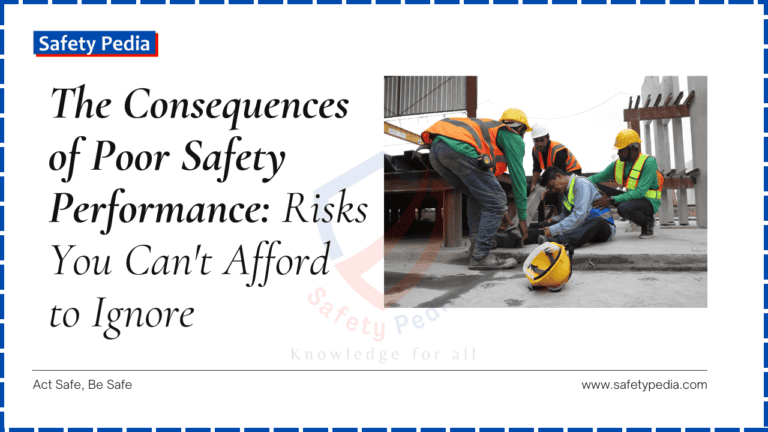
The Consequences of Poor Safety Performance: Risks You Can’t Afford to Ignore
Discover the potential consequences of poor safety performance in the workplace and how they can negatively impact both employees and the company as a whole.
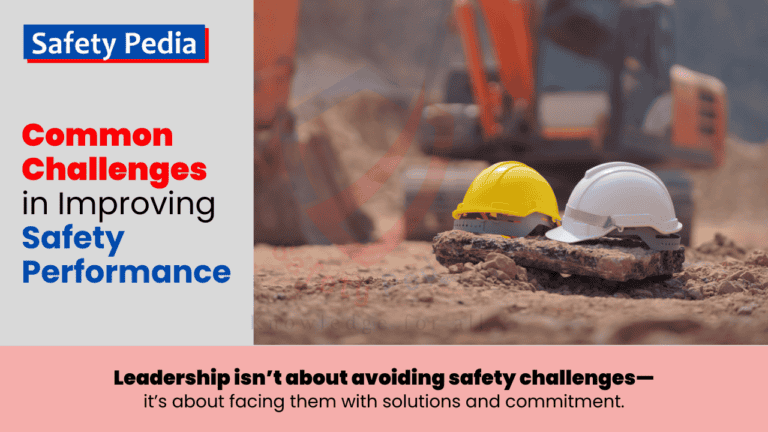
18 Common Challenges in Improving Safety Performance at Work
Discover 18 common challenges in improving safety performance at work. Learn how to overcome these obstacles for a safer workplace.
20 Best Ways to Improve Safety Performance in the Workplace
Discover the 20 best ways to improve safety performance at workplace, including actionable strategies for hazard prevention, employee engagement, safety training, and cultivating a culture of well-being.
Join Our Safety Community!
Stay informed with the latest tips and insights on occupational health, safety, and the environment.



